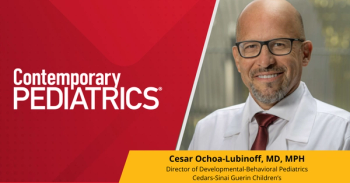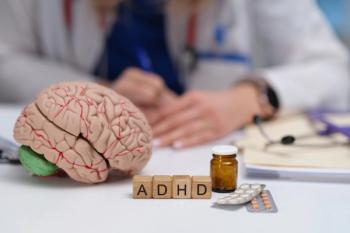
- Consultant for Pediatricians Vol 10 No 2
- Volume 10
- Issue 2
Child Near Expulsion From Preschool: Is Medication the Answer?
My 3-year-old son slaps and bites other children at preschool. His teacher says he is too hyperactive and needs medicine to calm him down.
A MOTHER ASKS:
My 3-year-old son slaps and bites other children at preschool. His teacher says he is too hyperactive and needs medicine to calm him down. I think he's just a typical active boy. How do I know if he has a hyperactivity problem, and what can I do about his misbehavior so he isn't expelled from preschool?
THE PARENT COACH ADVISES:
Disruptive behaviors are some of the most frequent concerns raised by parents. The key is to provide families and childcare providers with the necessary strategies to assess and intervene in disruptive behaviors. Here, both a developmental-behavioral pediatrician (NS) and school psychologist (LP) provide answers from their respective viewpoints.
Assessment. When deciding whether a child has an underlying disorder, it is important to determine the duration of symptoms and how they affect the child and the preschool.
LP: Disruptive behaviors emerge in early childhood and can persist into later years; they often impair developmental functioning1 and are associated with later academic and social difficulties.2 Yet diagnosing behavior disorders in young children is controversial because of the difficulty in identifying behaviors as symptoms during a developmental period marked by variability and instability.3 Researchers are determining that aggression occurs naturally in young children as a part of development.4 However, just because it is normal for a preschool child to be extremely active and sometimes display impulsive hitting or biting does not mean it is acceptable. If the boy in this vignette is disrupting his own learning or that of other children, then the problem behaviors must be addressed as soon as possible.
Whether or not a behavior can be labeled as part of a disorder such as attention-deficit/hyperactivity disorder (ADHD), it always serves a function. Disruptive behaviors generally occur for a handful of reasons.5 One is to get attention-from adults, peers, or both. Another is to avoid something the person does not like, such as a difficult or boring task. A third is to access something tangible he or she wants, such as a toy. Finally, some behaviors serve a self-stimulatory or self-regulation purpose (rocking, thumb sucking). Depending on the context, the same behavior can occur for different reasons. So in the above vignette, it is important to obtain information on when the child exhibits the disruptive behavior, and how other people respond, to determine its function.
NS: Generally, oppositional defiant disorder (ODD) is a pattern of negativistic, hostile, and defiant behavior lasting at least 6 months, and conduct disorder (CD) is a repetitive and persistent pattern of behavior in which the basic rights of others or major age-appropriate societal norms or rules are violated, for at least 12 months. If criteria for ODD or CD are not met, “disruptive behavior disorder, not otherwise specified” is considered.
ADHD must be diagnosed in at least 2 environments and affect functioning before age 7 years. Because a “lower age limit” is not defined in the Diagnostic & Statistical Manual, 4th edition (DSM-IV), ADHD is now being diagnosed in more preschoolers. The Preschool ADHD Treatment Study (PATS)6 determined that younger children do meet criteria for ADHD. Typically, the symptoms are more severe and there is a higher prevalence of comorbid conditions in younger children than in older children with ADHD. However, community clinicians may not have access to diagnostic instruments or may not feel confident separating typical developmental progression from ADHD behaviors. I suggest that these practitioners avoid diagnosing ADHD in preschoolers unless they are comfortable with the diagnostic and treatment protocols. Instead, they can refer to child psychiatrists, clinical child psychologists, or developmental-behavioral pediatricians, although in most communities access to these specialists is both time- and distance-limited.
Interventions. Once function is determined, one can generate strategies to help the young child learn an alternative acceptable behavior that serves the same function as the original behavior.
LP: A child hitting during play to get to the toys he wants can be taught how to request toys from other children and how to handle himself if they refuse. This is “social skills training.” A child who hits to get what she wants because she is not able to communicate as a result of language delay, sees others react immediately to aggressive behavior. For her, hitting becomes a means of communication. Here, it is important to teach her functional communication. In addition to teaching and reinforcing appropriate behavior, adults and even peers should stop giving the child what he wants when he hits or bites. This process, called “extinction,” helps the child understand that disruptive behaviors are no longer effective and that requesting appropriately is more effective.
Successful implementation of self-control and problem-solving skills has been linked to greater success in the child's interaction with peers.7 A community behavior therapist or psychologist can guide a parent or teacher on how to teach a child these skills (Table). It is also important that all adults working with a child communicate with each other on the strategies being taught. This helps reinforce the strategies and reduce any confusion or contradiction.
NS: Studies have shown that stimulant medications are effective in preschoolers but cause more adverse effects in younger children than in older children.8 The a2-agonists clonidine and guanfacine9 are increasingly being used off-label for impulsivity, hyperactivity, and aggression. The clinician should use caution when prescribing these medications because of the risk of cardiac adverse effects, particularly rebound hypertension that occurs with erratic dosing. Sedation may also worsen behaviors, because a young child tries to fight somnolence and becomes more irritable. Atypical antipsychotics (risperidone, olanzapine, quetiapine, aripiprazole) are increasingly used to treat disruptive behaviors.10 However, their use in preschoolers has not been studied. The adverse effects of these agents range from irreversible tardive dyskinesia and potentially lethal neuroleptic malignant syndrome to the more common weight gain, sedation, and elevation of cholesterol and blood sugar levels that requires frequent metabolic monitoring. I caution primary practitioners against using atypical antipsychotics in preschoolers and suggest referral to a specialist for guidance.
Advocacy. It is important to first determine whether the child is in a public or private preschool setting.
LP: The Individuals With Disabilities Education Act (IDEA) requires public schools to provide children and youths from age 3 to 21 years with free and appropriate education. If a child demonstrates interfering behaviors in the preschool classroom, school personnel must devise interventions to address these behaviors. If the boy in this vignette is in a public preschool program, the mother should ask what strategies have been implemented. If the teacher or mother suspects that the behavior may require more specialized management, then he or she can request an evaluation from the preschool director, district special education director, or early childhood special education coordinator. This will likely be a functional behavior assessment whose data will be used to develop a behavior intervention plan, which highlights the target behaviors and specific strategies individualized to the particular child's behavior.
NS: IDEA does not directly apply to day-care centers and private preschools. However, the parent can engage the school district of residence to evaluate the child or can ask the state's preschool grant coordinator for information on how to access services. A list of coordinators for each state is found at
Community mental health agencies, community and educational psychologists, and clinical social workers who understand the specific needs of families in the context of available resources can also help. A list of suggested readings on disruptive behavior for parents and educators is provided in Table 2.
Editor's note: In the March 2011 issue of Consultant For Pediatricians, Michael C. Cassano, MD, and colleagues discussed
References:
REFERENCES:
1. Wakschlage LS, Briggs-Gowan MJ, Carter AS, et al. A developmental framework for distinguishing disruptive behavior from normative misbehavior in preschool children. J Child Psychol Psychiatry. 2007;48:976-987.
2. Agostin TM, Bain SK. Predicting early school success with developmental and social skills screeners. Psychol Schools. 1997;34:219-228.
3. Campbell SB. Behavior Problems in Preschool Children: Clinical and Developmental Issues. 2nd ed. New York: Guilford Press; 2002.
4. Alink LR, Mesman J, van Zeijl J, et al. The early childhood aggression curve: development of physical aggression in 10- to 50-month-old children. Child Dev. 2006;77:954-966.
5. Iwata BA, Vollmer TR, Zarcone JR. The experimental (functional) analysis of behavior disorders: Methodology, applications and limitations. In: Repp AC, Singh NN, eds. Perspectives on the Use of Nonaversive and Aversive Interventions for Persons With Developmental Disabilities. Sycamore, IL: Sycamore Publishing Co; 1990:301-330.
6. Posner K, Melvin GA, Murray DW, et al. Clinical presentation of attention-deficit/hyperactivity disorder in preschool children: the Preschoolers with Attention-Deficit/Hyperactivity Disorder Treatment Study (PATS). J Child Adolesc Psychopharmacol. 2007;17:547-562.
7. Mayeux L, Cillessen AH. Development of social problem solving in early childhood: stability, change, and associations with social competence. J Genet Psychol.2003;164:153-173.
8. Wigal T, Greenhill L, Chuang S, et al. Safety and tolerability of methylphenidate in preschool children with ADHD. J Am Acad Child Adolesc Psychiatry. 2006;45:1294-1303.
9.CNS Drugs. 2009;23(suppl 1):43-49.
10. Haas M, Karcher K, Pandina GJ. Treating disruptive behavior disorders with risperidone: a 1-year, open-label safety study in children and adolescents. J Child Adolesc Psychopharmacol. 2008;18:337-345.
Articles in this issue
almost 15 years ago
Pediatric Musculoskeletal Infections: Managing the Significant Organismsalmost 15 years ago
Supracondylar Processalmost 15 years ago
Abdominal Mass in Teenage Girl: Hair's the Diagnosisalmost 15 years ago
Is This Brown, Scaly Rash Related to Obesity?almost 15 years ago
Unilateral Laterothoracic Exanthemalmost 15 years ago
Young Girl With “Bumpy” Red Eyealmost 15 years ago
Ganglion cystNewsletter
Access practical, evidence-based guidance to support better care for our youngest patients. Join our email list for the latest clinical updates.








